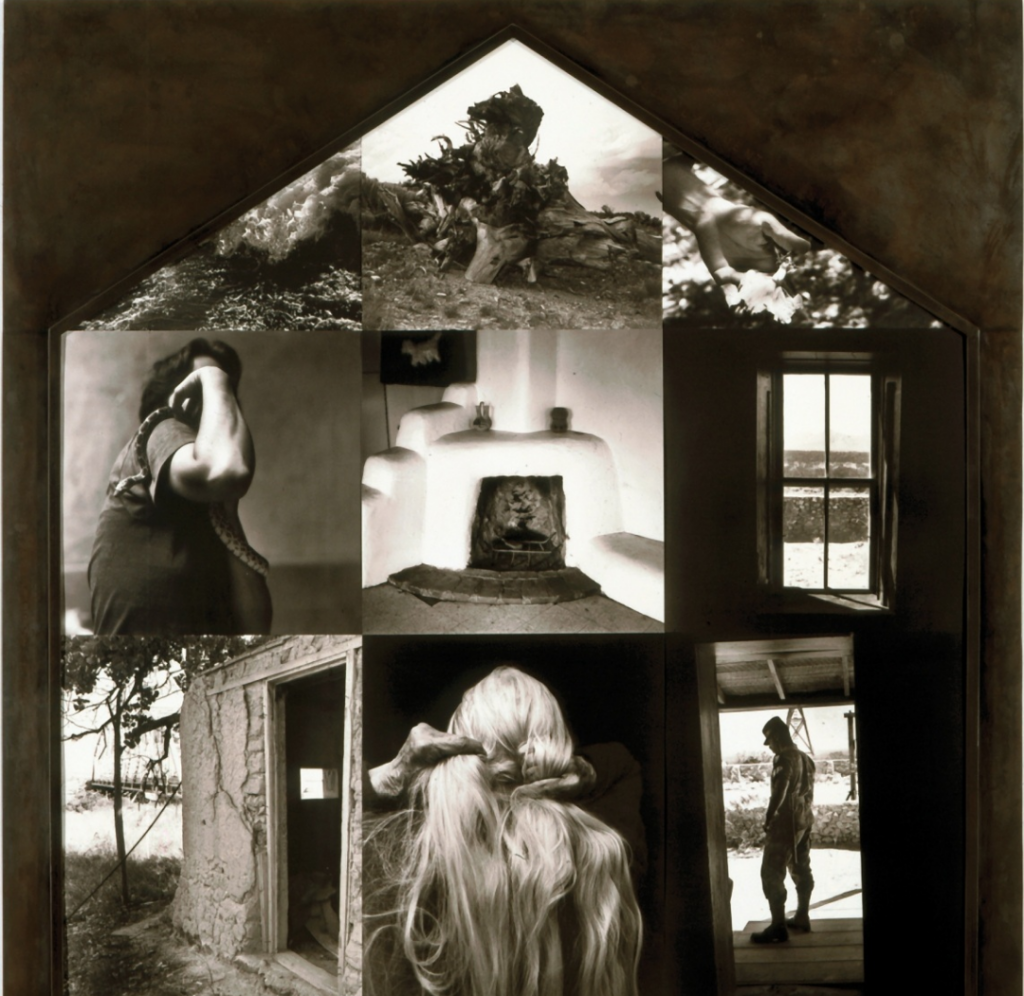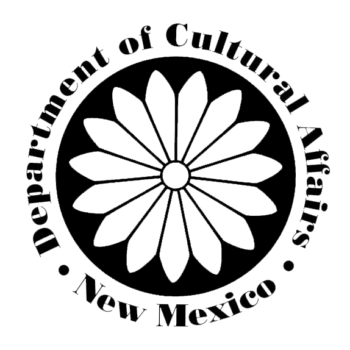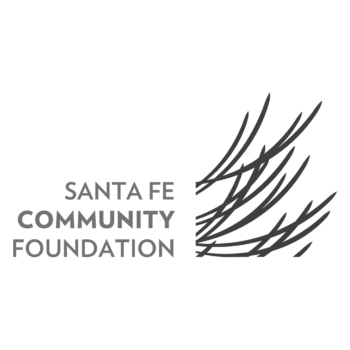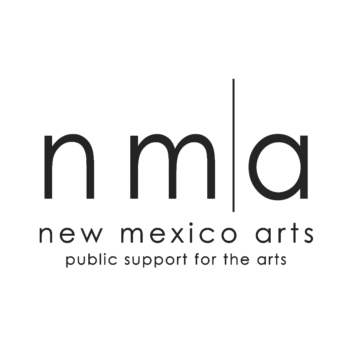
July 23 – August 16, 2023
Critical Mass is a major multi-media artwork that Meridel Rubenstein created between 1989 and 1993 with her collaborators, Ellen Zweig and Steina and Woody Vasulka. Critical Mass a poetic, thought-provoking, and deeply moving work that examines the many ways the Manhattan Project affected the scientists who created it, the nearby Los Alamos residents, the nearby San Ildefonso pueblo residents, and humanity itself.
Critical Mass was shown during the weeks that CCA presented Christopher Nolan’s blockbuster Oppenheimer in two galleries – the large Munoz /Waxman Gallery and in the Cinema Gallery adjacent to CCA’s main cinema.
Critical Mass created a sensation in the art world when it first opened and toured the United States. Although CCA was unable to exhibit this major work in its entirety, this summer exhibition is the first time in decades that so much of Critical Mass was assembled to be on public view.
Background on Critical Mass
In 1989, photographer Meridel Rubenstein and performance artist and poet Ellen Zweig received an NEA Inter-Arts grant to create the installation Critical Mass, with technical assistance by Steina and Woody Vasulka. The New Mexico Museum of Fine Arts gave institutional support for the exhibition that premiered in November 1993 in Santa Fe and then traveled for three years to sites that included MIT’s List Center in Cambridge, Massachusetts and Chicago’s Museum of Contemporary Photography.
The term “critical mass” refers to the smallest amount of fissionable material that, when amassed, will sustain a self-supporting chain reaction. Critical Mass is a collaborative photo/text/video/performance installation that takes as its subject the worlds of scientists and Native Americans as they intersected at the home of Edith Warner during the making of the first atomic bomb in 1944 in Los Alamos, New Mexico.
Edith Warner’s nurturing teahouse on St. Ildefonso Pueblo land drew Robert Oppenheimer, director of the Manhattan Project, to her backyard to build the atomic bomb. Her home was where scientists and Native Americans first met.
Meridel Rubenstein created the Fatman images in Critical Mass in 1992 at the Bradbury Museum in Los Alamos, where the second of three plutonium bomb casings of the Fatman plutonium bomb resides. She projected slides onto the casing in a makeshift darkroom. The Fatman bomb was dropped on Nagasaki killing more than 110,000 people.
Seventy-nine years later, the forces of nuclear destruction vanquishing domestic safe haven and the power of the Feminine that these works evoke, are even greater. Since Albert Einstein created the Doomsday clock in 1947, we are now closest to Midnight at 90 seconds.

Credit: Meridel Rubenstein’s Edith’s House, 1993. 9 palladium prints in shaped steel frame stamped with text. Loan courtesy of Tia Collection, Santa Fe, NM
Background on Meridel Rubenstein
Meridel Rubenstein began her professional career in the early 1970s, evolving from working as a photographer of single photographic images to an environmental artist of extended photographic works, multi-media installations, and social practice that focuses on intersections of nature and culture in relationship to ecological and social imbalance.
She has maintained her studio in Santa Fe, New Mexico since 1975, and is represented by Turner Carrol Gallery in Santa Fe.

CCA is grateful to Meridel Rubenstein for allowing CCA mount this extraordinary show, to the TIA Collection for loaning two major works in the Critical Mass exhibition, and to Chatter and Tony Zancanella for allowing this extraordinary work to be presented the Munoz/Waxman Gallery.
Special events at CCA related to Critical Mass
Saturday, July 29 at 4:30pm – A reception for Meridel Rubenstein, who talked about her Critial Mass work and introduced other special guests and speakers. Location: Munoz/Waxman Gallery.
Sunday, August 6 at 2:00pm – Gallery walk through Critical Mass led by Meridel Rubenstein, starting in the Munoz/Waxman Gallery.
Tuesday, August 8 at 5:00pm – Roundtable discussion about Critical Mass, moderated by Tonya Turner Carroll. Panel featured Alicia Inez Guzman, Roshi Joan Halifax, Josie Lopez, Meridel Rubenstein, Kathy Wan Povi Sanchez, and Rebecca Solnit.
Tuesday, August 15 at 7:00pm – Screening of two anti-nuclear films by Adam Horowitz: Nuclear Savage: The Islands of Secret Project 4.1 and Atomic Gods: Creation Myths of the Bomb. After the films, Meridel Rubenstein and Matthew Chase Daniel joined Adam in an audience Q&A.






